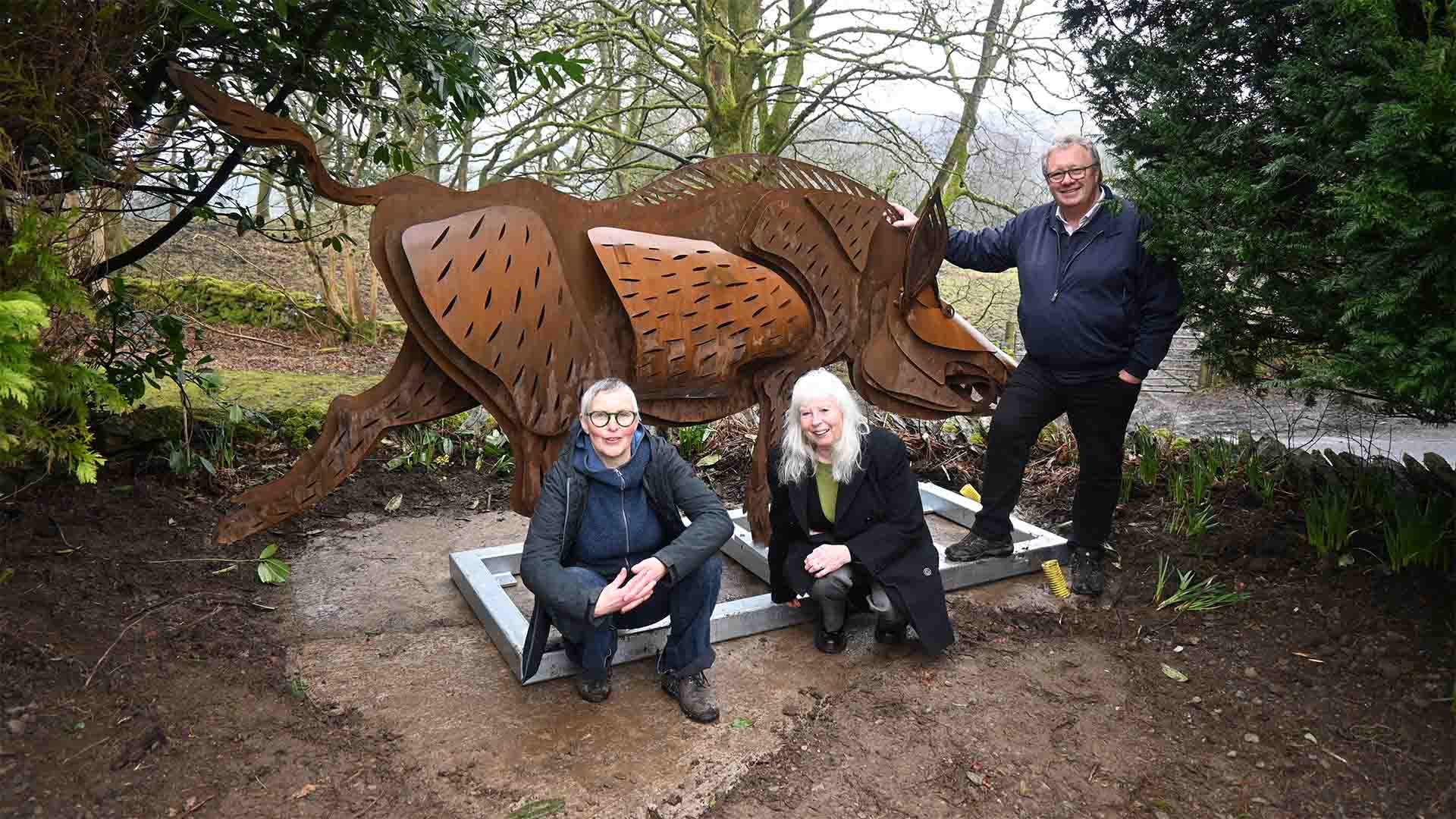Outdoor art in the Lake District can be a wonderful surprise, especially when you come across something unusual in a place where you would not expect to find it.
Inspired by the outdoor artwork of Dutch artist Marjan Wouda, whose sculptures appear in the great wide open in many rural locations across the country, Wild Boar Estate has installed a spectacular porcine sculpture in its grounds in the Gilpin Valley.
Marjan was awarded the commission from English Lakes Hotels to create the corten steel sculpture for the venue to celebrate the local legend of a ferocious wild boar slain by a knight of the realm.

Wild Boar Estate takes its name from the historic thirteenth century tale of Sir Richard de Gilpin, who bravely fought and killed a particularly troublesome wild boar which was causing havoc in the region.
Measuring 1.5 metres in height and 3 metres in length, the arresting new sculpture has been designed to raise the profile of the venue’s history, showcase its 72 acres of tranquil rural woodland and provide a talking point for guests and visitors.
Marjan, who has lived in Darwen in East Lancashire for 25 years, worked in conjunction with Barnoldswick firm Metalcraft Engineering to create the wild boar sculpture for English Lakes Hotels. It is her first major commission in Cumbria.
The sculpture’s corten steel material has copper mixed into it so that only the surface oxidises to bring out the beautiful iron oxide, rusty colour finish. It is a medium that is long lasting, highly durable and maintenance free – ideal for artworks such as this in rugged outdoor environments.
Similar works by Marjan include ‘Dandy’, a 2-metre high stainless steel sculpture inspired by the history of the Pendle Witches, the Dun Cow of Parlick Fell and the 3.5 metre tall Sir Hare at Gisburn Forest.
Dandy was inspired by the tale of James Device who was one of the so-called Pendle witches put on trial in 1612. He confessed to having a supernatural spirit in the form of a black dog, whom he named ‘Dandy’.
Sir Hare came to life from more Lancashire folklore and the 3.6m high sculpture has been displayed at a number of different locations in the North West, whilst the Dun Cow celebrates another beast which in past times roamed the fells of the Forest of Bowland.
Simon and Ben Berry from the hotel group went to see Marjan’s work and were thrilled with the idea of creating something similar for Wild Boar Estate and illuminating a legendary tale from Lake District history.
Marjan’s artwork can be found in Hong Kong, the Caribbean, London, Greater Manchester, Newcastle-upon-Tyne, and in many green spaces in Lancashire and Yorkshire. Her work has been featured in an international touring exhibition, Germinations IV, with displays in Marseille, Breda (Holland), London (Royal College of Art) and Bonn.
She has regularly exhibited in Amsterdam and in London, the latter mainly at Curwen Gallery in Fitzrovia. Her artwork has also been included in the Chelsea Flower show and sold through fine art specialists Sotheby’s.
Born in the North East of the Netherlands where she grew up on her family’s small dairy farm, Marjan moved to England when she was 19 and subsequently embarked on a Visual Arts Foundation Course at Manchester Polytechnic.
She followed this up with a First Class Honours Fine Art Degree specialising in sculpture at North East London Polytechnic, before returning to Manchester to complete her formal art training with an MA in Fine Art (Sculpture).
Initially working mainly in clay, Marjan started casting in bronze and other materials, working from originals in cardboard, clay or wax. She enjoys working in a huge range of scales, from hand-held pieces in paper, wax, clay or wire, to the monumental – the latter often constructed in welded steel.
Marjan makes sculptures mostly of animals but with the underlying theme being the human experience, often drawing from history and literature, nursery rhymes, proverbs and stories of the past.
She says that each sculpture is an adventure, and all her work begins with drawings, then the creation of small hand held pieces in wax or clay to experiment with the posture of the proposed piece.
This new piece of Lake District art complements the ‘wild’ and fun themes of the venue’s outdoor activities and adventures in its extensive surrounding grounds.
As well as enjoying the sumptuous food and drink from the grill restaurant, smokehouse and microbrewery, guests and visitors can book in for falconry hawk walks, archery, clay pigeon shooting and axe throwing, or choose to wander peacefully through the estate’s 72 acres of woodlands.
